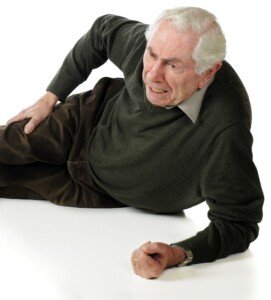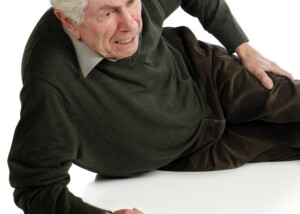
Milliseconds count when you realize you’re falling, and the lag in milliseconds that elderly people have compared to younger is part of the reason they’re more likely to end up flat on the ground.
The millisecond delay in realizing that they’re in the midst of a fall could mean a fractured hip for the elderly person.
A study from the University of Waterloo reveals intriguing findings.
“When the nervous system’s ability to detect a fall and compensate with protective reflexes diminishes,” says study lead author Michael Barnett-Cowan in the 2017 report, “the risk of injury or death increases significantly.”
The study involved participants who underwent supervised falls that coincided with sounds produced by the researchers.
Participants over 60 took on average 88 milliseconds before they were able to perceive the sound and the supervised fall as occurring at the same time.
Younger participants took only 44 milliseconds.
In terms of catching a fall and re-steadying oneself, milliseconds count. For example, imagine you’re walking on a concrete driveway and step on a slick patch of ice.
Your foot slips. Now … several inches into that slip – no more – correlates to a time lapse of only milliseconds.
Can a human catch a fall at this point? Never. But maybe 40 more milliseconds, the person – at least if under age 60 – has a chance at making adjustments with their body that will prevent their head from slamming into the concrete.
This lag time means that by the time a senior age man or woman realizes they’re falling — it’s usually too late to effectively minimize, let alone prevent, a fall.
Don’t Rely on Only a Fall Detection Pendant
Nowadays, there are fall detection pendants (which can also be worn on the wrist) that fall-prone people can wear.
If the fall renders the wearer unable to push the alert button, help will still be on the way because these devices detect the fall and send a signal to the company’s call center which will then dispatch help.
However, the best medicine is prevention! The fall should not occur in the first place.
Fall Prevention for the Elderly
“To help prevent falls for older adults there are several things I would suggest,” says Amber Robins, MD, a board certified family medicine physician in NY.
“First, making sure that you are physically active can help prevent falls,” continues Dr. Robins.

Shutterstock/pikselstock
“This may include walking often to reach 10,000 steps a day or doing as many steps as possible. These both can lead to good heart health in addition to preventing falling.
“Additionally, strength training like lifting light weights can be helpful to maintain better balance while walking.

Shutterstock/Mladen Zivkovic
“Some find that water aerobics is a good way to get both physical activity and strength training done, especially for those who may have knee problems. The water helps take pressure off the knees when exercising.
“Another way to prevent falling is by taking vitamin D supplements.
“This is usually reserved for those who may be at higher risk of having a fall like those who may have difficulty getting up from a sitting position or who are more likely to be vitamin D deficient due to little sun exposure.
“The suggested dose is 600 to 800 IU daily for these individuals.”










































